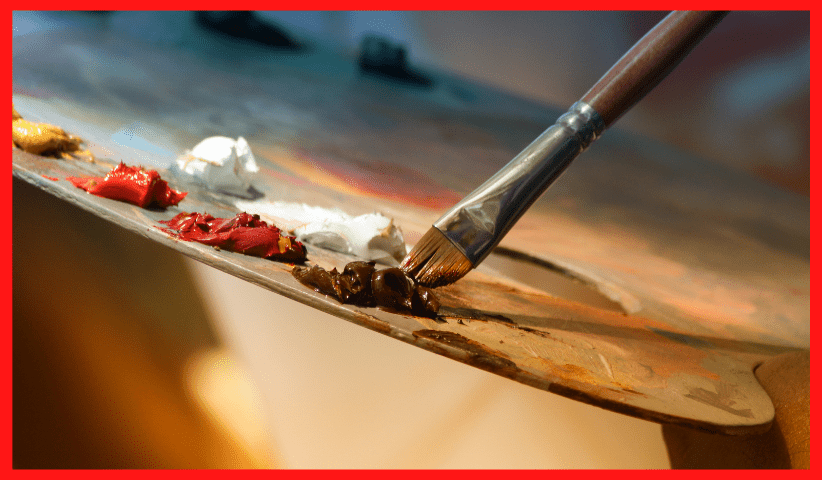There is no better or easier method to transform the look of your house than with a fresh coat of paint. Remodeling is labor-consuming and unattractive, and it takes time for new landscaping to establish itself. But, whether you’re repainting the front entrance or redesigning the kitchen, a new coat of paint can make a big difference. You don’t have to be an expert to use the appropriate interior painting techniques. You only need to know a few trade secrets.
Painting Safety Precautions

Painting may not appear to offer any risk to the painter or even other family members, save for the threat of slipping off a ladder or scaffolding, but the paint itself is a material that may be dangerous to a person’s health. Paint is a chemical mixture that needs cautious handling and safeguards. Here are some things to keep in mind:
- Paint materials: whether water-thinned or solvent-thinned, are toxic and should be kept away from children and pets. Antidotes are listed on can labels.
- Work in well-ventilated locations at all times, even if you’re using unscented paints. They nevertheless contain gases that might be dangerous if ingested. When painting inside, use a paper painter’s mask. When using an airless sprayer, you should also wear one outside. Sleeping in a room before the smell has gone away is not advised.
- Avoid smoking while painting, and if at all possible, put out the pilot lights on any gas appliances. First, turn off the unit’s gas supply.
- Toxic paint compounds can be absorbed via the skin. As soon as possible, wash your hands.
- Wear goggles to prevent paint from getting in your eyes while painting overhead. Chemical compounds have the potential to burn delicate eye tissue.
- Never drink alcohol when painting. When combined with paint fumes, it can be deadly.
The technique you select for the project should be determined by the region of your home that you are painting. All painting tasks, large or little, need careful planning and focus on every detail. Taking shortcuts results in a mediocre paint job which won’t last long. Here are some things you should avoid while painting your next project.
Trying to Do It All in One Coat
Attempting to save time by slathering on a thick coat of paint is a terrible idea. To begin, one coat rarely provides adequate coverage. A heavy layer of paint will also run and take a long time to dry. It is more easier and produces better effects to apply two thin, equal applications.
Unprimed Patches Are Painted Over
The problem with most patching compounds is that when you paint over them, they leave a hazy area on the painting wall. This is referred to as “flashing” by painters, and it is unsightly. There are two methods for preventing flashing. The first step is to apply a sealing primer over the repair. The alternative option is to use a self-priming patching product like 3M’s Patch
Avoiding wall sanding

Before rolling on paint, sand your walls for a smooth surface. Sanding removes lumps, roller lint, and other debris from prior paint treatments. It’s recommended to use a plaster sanding pole with 80- or 100-grit plaster sanding paper. You may also use a portable sanding block, but it will take more time. To save time, slathering on a thick coat of paint is a terrible idea. To begin with, one coat rarely provides adequate coverage. A heavy layer of paint will also flow and take an eternity to dry. Applying two thin, equal coatings is significantly easier and produces far better results.
Overpainting Partially Dried Paint
Are you in a rush to complete the task? Painting over wet paint is not the solution. The worst-case situation is that you’ll loosen the partially dried paint, causing it to start dripping onto your brush or roller and making a huge mess. But even if it doesn’t, painting over wet paint might interfere with adhesive or prolong drying time. Stick to the drying time specified on the paint container.
Leaving the Baseboard Unmasked
Mask off the baseboards even if you are an expert painter and can paint a line that is precisely straight without using any masking tape. Otherwise, they’ll be covered with paint splatters (or worse).
The baseboard does not have to be entirely covered. All you need to collect the splatter is a 1-1/2-in. or 2-in. strip of tape that is left hanging out like a tiny roof.
Skipping the preparation work
Washing, repairing, caulking, and sanding are all time-consuming and tiresome procedures. However, there is no alternative for thorough preparation if you want a professional-looking paint job.
Painting using a can
Painting directly from the gallon container is alluring since there will be less cleanup. However, this is a mistake for various reasons. Since a full gallon weighs a lot, spilling one will need extensive cleanup. Additionally, it’s challenging to properly load a paintbrush with paint from a full gallon.
Always paint from a tiny amount of paint transferred to another container. Additionally, straining the paint to get rid of lumps and impurities is a smart idea while you’re at it.
Aiming for Paint to Fill in the Gaps
Pat Stinson, Field Editor, reasoned that letting the heavy paint cover the baseboard gaps would save him time. But once the paint had dry, the gaps had returned, so he still needed to caulk. The lesson is to caulk first and then paint.
Paint should be well mixed

If the paint is not well mixed, all of its constituents will not be merged, and the actual color and consistency will not be achieved. Whatever method of application is utilized, the oil (clearish appearing fluid) will most likely be applied first, followed by streaking color sections and individual tints. It appears to be whirling streaks. As a result, every time paint is applied, it MUST be well mixed.
Without first sealing the wallpaper, painting it
If you consult a painting specialist or a paint manufacturer, they will most likely tell you that removing the wallpaper and removing any remaining adhesive before painting is the best option. However, there are situations when peeling the wallpaper might damage the wall underneath. While painting over wallpaper is possible, there may be certain exceptions. Before you invest in paint, resources, and time, discover when you should and should not paint over wallpaper.
These simple suggestions should motivate you to paint the room you’ve been putting off painting. Painting a room might take a few hours, a full day, or longer. All of that depends on what you decide to paint and how much you are willing to spend. In only a few hours, you may transform a room by refinishing a door or cabinet. You may also divide it into smaller tasks and stretch them out across a week or longer. The painting procedures stay the same no matter the size of the task.



